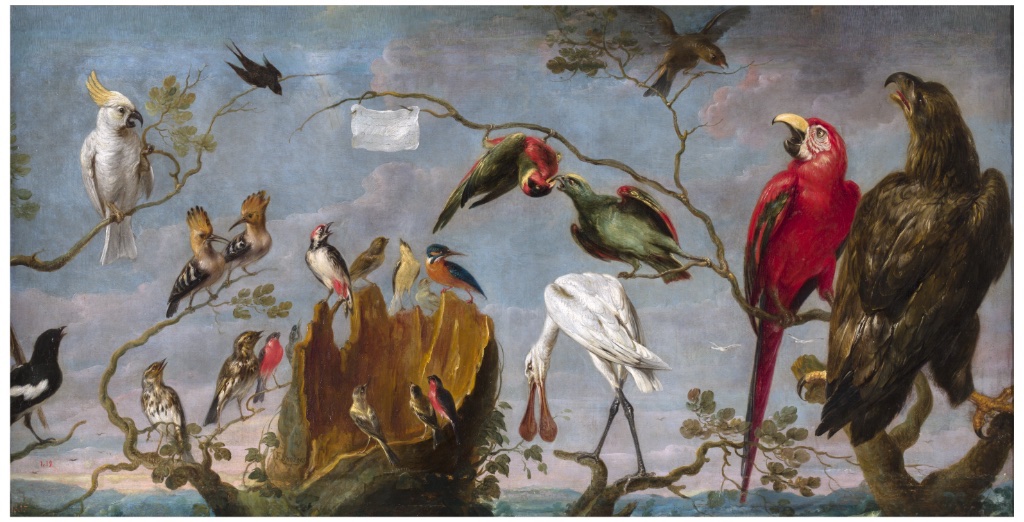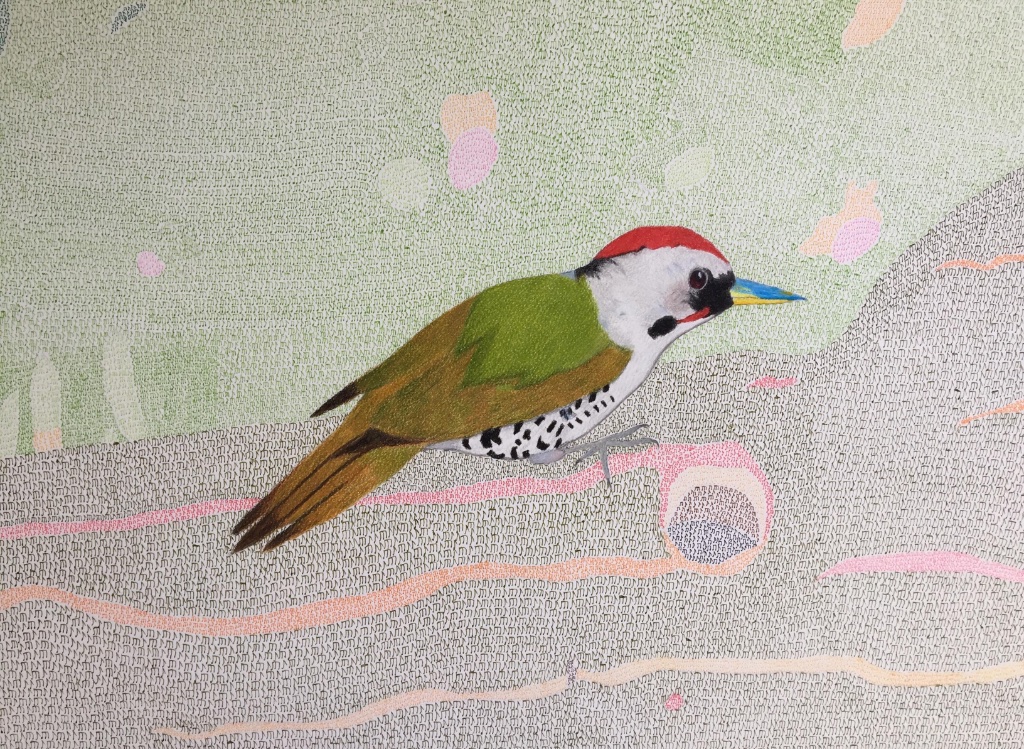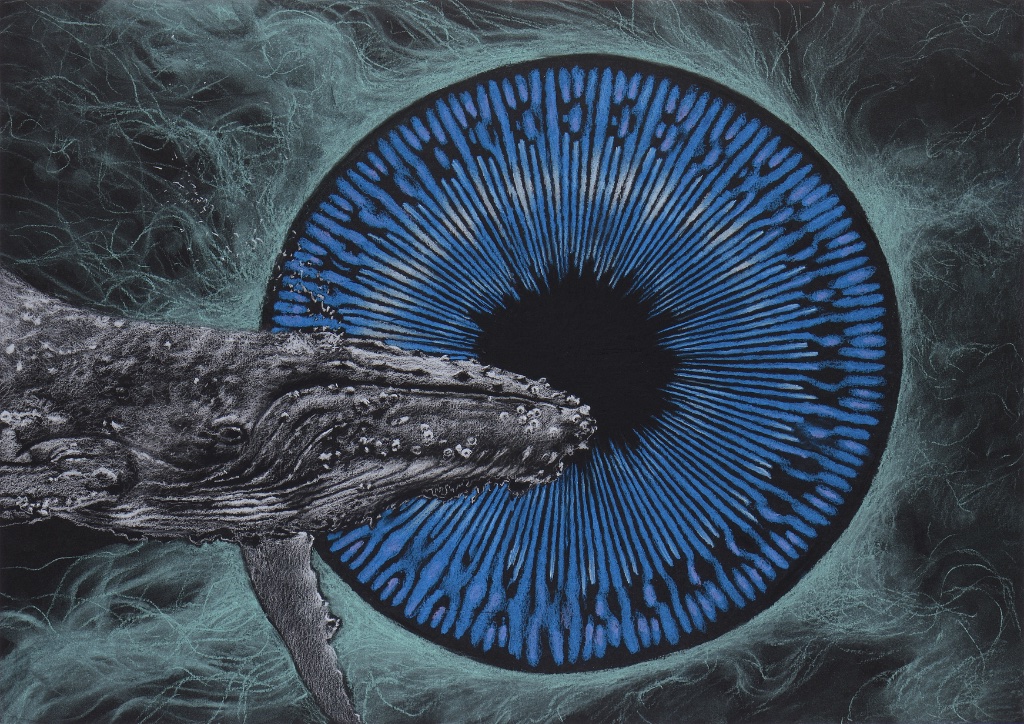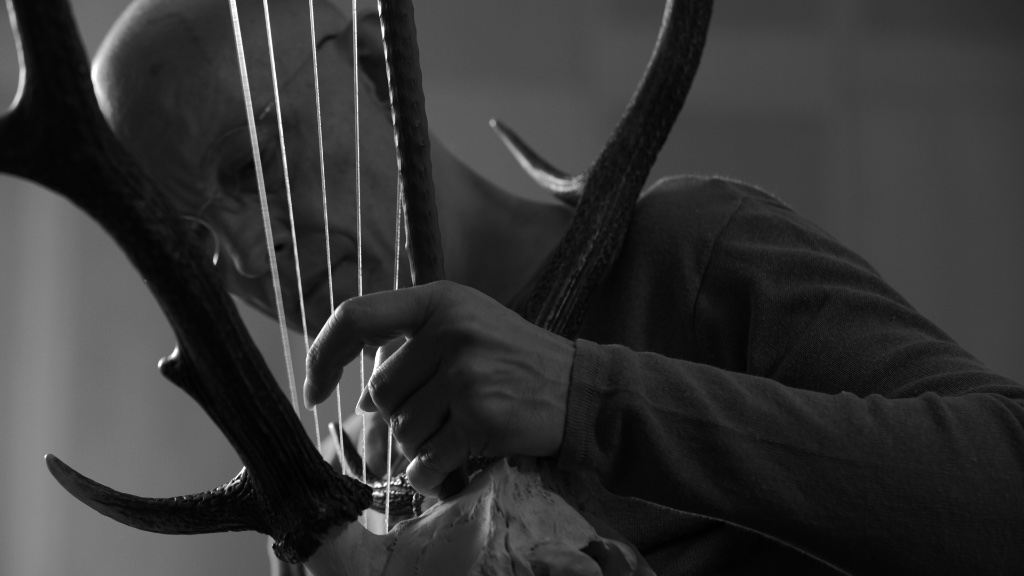Strange sounds fill the exhibition space at the Musée de la Musique-Philharmonie de Paris: the roar of a rutting stag, the trill of a song thrush, the clacking of stag jawbones being used as percussion instruments – and that’s just what’s audible to the naked ear.
The animal soundscape meets human music, the visual arts and science in “Musicanimale,” an enormously entertaining show with a very serious message, one that might not have automatically occurred to us: by 2050, with the predicted extinction of up to half of the world’s species, a relative silence will reign on Earth. We may not miss the underwater wailing of the whales in our everyday lives, but what will life be like without birdsong?
To avoid pandemonium, visitors arriving at the exhibition are handed a set of headphones, which they can plug into the multiple jacks accompanying many exhibits to listen to everything from the Papageno–Papagena duet from Mozart’s The Magic Flute, full of birdsong-inspired vocalizations, and the actual sounds made by a multitude of insects, accompanied by interpretations in music by such composers and musicians as Rimsky-Korsakov, Saint-Saëns (his famous Carnival of the Animals) and Miles Davis.

The exhibition is a feast for the eyes as well as the ears. We are greeted by artist Nelly Saunier’s sculpture “Arbre Paon” (“Peacock Tree,” 2021), made with real peacock feathers but even more spectacular than any real peacock ever was, and Frans Snijders’ charming 16th-century paintings of multifarious birds of many colors performing concerts, complete with a musical score hanging from a branch.
The artist Miruka’s fanciful and colorful drawings (see the illustration at the top of this page) of various birds are a delight to look at, while a display of cuckoo clocks provides another example of human interpretation of bird sounds, and Julien Salaud’s illustrations of cymatics show what happens when animal sounds are made visible. The same artist is present with works featuring insects decorated with feathers, beads and sequins.
Other animals, including wolves and cats, get a look-in as well, with, for example, a recording of the highly amusing “Cat Duet,” attributed to Rossini. Cats also feature in the drawing “Interior with Cat Concert,” after Cornelis Saftleven, and the anonymous painting “Cat Organ” (c. 1675-99). Sure to upset all animal lovers, the latter shows six cats arranged according to the pitch of their voices in a large wooden box with their heads and paws sticking out. To play the organ, the musicians (monkeys in the painting) pull on their tails and paws to make them yowl.
The musical instrument made from a stag’s jaw mentioned above is part of an installation by Erik Nussbicker, an artist who specializes in subtle transformations of elements of nature. The show includes an installation of his musical instruments made from a stag’s skeleton and a fascinating video in which he performs on them.
Near the end of the show, a mesmerizing installation by Tomás Saraceno, “Sounding the Air,” translates the slight movements (caused by temperature changes and visitors’ movements and breath) of four floating spider-web filaments into audible sound.
If you go to this show, a joy for both children and adults, I advise you to pack a lunch and spend the whole day. I went at 4pm, two hours before closing time, and had to tear myself away from many of the recordings I would have liked to listen to for much longer. The benefit of going late, however, is that the school groups have left by then (the last one was on its way out just as we arrived).
We can only hope that all visitors to the show, young or old, will leave it determined to do what they can to preserve the symphony of life.
Favorite




